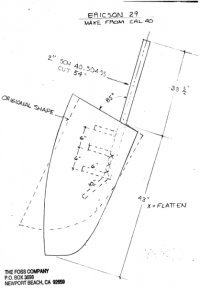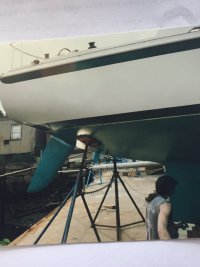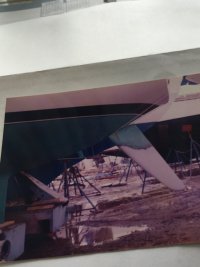Hi Seth my concern was the tension on the forward lowers when loading the backstay if the forward lowers have been preloaded for curve at a neutral position , The aft lowers would not be a problem, it's a very stiff mast for-aft . On a tapered fractional rig you can work wonders with and adjustable backstay but on a stiff masthead rig like the e-29 it pretty limited in comparison , I'm going to give it a go and see what happens. Great description of the effect of backstay tension Seth.
Your dead right about not wanting you mast to invert. Aluminium unlike stainless steel fatigues when brought past a zero point such as the straight position of a mast. This is one reason why many rigger insist on a bit of precurve as to invert the mast your first have to push threw the curve to straight , a very hard thing to do. It's the same reason aircraft parts are put together stressed so the never pass the zero point. As well as toggles failing I have seen more often clevis pins cut clean threw by the movement of sloppy stays .
I couldn't find a source for the Johnson handilock??
I would not recomend shortening a backstay as a DIY project. Stalock Norseman ect fittings require a degree of expertise to work properly Unless you are really confident don't do it and risk the loss of your stay. If you do use one tighten it and then open it up and make sure the button is done correctly I have seen many of these when on disassembly were not done properly and were held together by sikaflex and the grace of god. Best to take the stay to a rigging shop and have a swaged fitting put on .
This is a great site thanks to all for the great information.
Eric
Your dead right about not wanting you mast to invert. Aluminium unlike stainless steel fatigues when brought past a zero point such as the straight position of a mast. This is one reason why many rigger insist on a bit of precurve as to invert the mast your first have to push threw the curve to straight , a very hard thing to do. It's the same reason aircraft parts are put together stressed so the never pass the zero point. As well as toggles failing I have seen more often clevis pins cut clean threw by the movement of sloppy stays .
I couldn't find a source for the Johnson handilock??
I would not recomend shortening a backstay as a DIY project. Stalock Norseman ect fittings require a degree of expertise to work properly Unless you are really confident don't do it and risk the loss of your stay. If you do use one tighten it and then open it up and make sure the button is done correctly I have seen many of these when on disassembly were not done properly and were held together by sikaflex and the grace of god. Best to take the stay to a rigging shop and have a swaged fitting put on .
This is a great site thanks to all for the great information.
Eric




